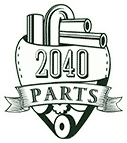Fuel Injector 0280155715 For Jeep Dodge Dakota Ram Van 5.2l 5.9l 8 Pcs on 2040-parts.com
Shenzhen, China
Fuel Injectors for Sale
 Fiat 500 c 312 fuel supply 1.20 petrol 51kw 2009 20484997-(US $)
Fiat 500 c 312 fuel supply 1.20 petrol 51kw 2009 20484997-(US $) Diesel fuel injector fits volvo 740 2.4d 85 to 92 nozzle valve bosch 1328208(US $)
Diesel fuel injector fits volvo 740 2.4d 85 to 92 nozzle valve bosch 1328208(US $) Petrol fuel injector fits audi 100 c3 1.8 2.2 84 to 90 nozzle valve bosch new(US $)
Petrol fuel injector fits audi 100 c3 1.8 2.2 84 to 90 nozzle valve bosch new(US $) Fuel pressure regulator fits vw jetta mk1, mk2 1.6 1.8 78 to 89 control valve(US $)
Fuel pressure regulator fits vw jetta mk1, mk2 1.6 1.8 78 to 89 control valve(US $) Mazda cx-5 ke,gh fuel supply a502003q 2.20 diesel 129kw 2014 17931499-(US $)
Mazda cx-5 ke,gh fuel supply a502003q 2.20 diesel 129kw 2014 17931499-(US $) Injectors mitsubishi 1.8l space runner colt mirage inp-063 mdh210 set of 4(US $130.00)
Injectors mitsubishi 1.8l space runner colt mirage inp-063 mdh210 set of 4(US $130.00)
SEMA 2008 show report: Pontiac G8 and Solstice
Fri, 07 Nov 2008By Ben Whitworth Motor Shows 07 November 2008 10:01 According to Pontiac, its G8 GXP Street, G8 ST and Solstice GXP concepts at the SEMA show ‘raise the performance bar even higher, taking style and sportiness to the highest levels’. Time to don your oxygen masks as we scale the dizzy heights of Pontiac’s performance peaks. While the standard GXP isn’t short of grunt with a 6.2-litre 415bhp V8 under the bonnet, the Street swings with a hefty 7.4-litre punch that’s good for 638bhp and 600lb ft of torque.
Hyundai & Kia get Google Maps integration – but not in UK
Sun, 06 Jan 2013Hyundai and Kia are adding Google Maps functionality to their SatNav Systems in the US, but it’s not coming to the UK any time soon. In the US, Hyundai has a clever system called Blue Link (Kia has a similar system called UVO) that offers increased functionality for stuff like the SatNav, Remote Access, Location Sharing and Enhanced Recovery. It costs a few hundred dollars a year (for the all-singing, all-dancing version), but makes your Hyundai much smarter than the average bear.
Essay: Variable Degrees of Translucency
Mon, 12 Nov 2007Car door panels and fenders are generally made of steel, sometimes of aluminum or plastic composites, and you can't see through them. Car windows, on the other hand, are made of a transparent sandwich of glass and plastic - and you can see through them. But in the future there will be variable degrees of transparency: translucent elements where once there were none, traditional window areas that will have opaque elements and graduated progressions from opaque to see-through.










